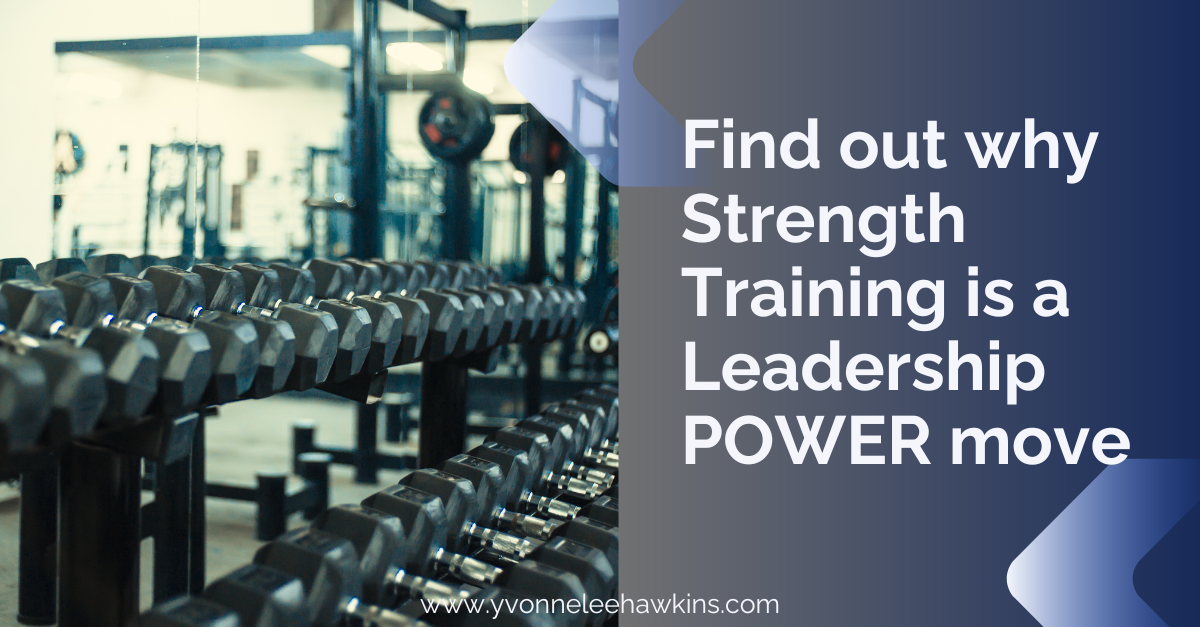— Building Strength for Leadership Stamina
In leadership development, we often hear about emotional
intelligence, strategic thinking, and time management. But one essential
ingredient for long-term leadership success is often overlooked: physical
strength.
Yes—physical strength. The stamina to lead is rooted
in your ability to sustain energy, recover from stress, and remain mentally
sharp. That’s where strength training steps in—not just as a fitness routine,
but as a powerful tool for sustainable leadership. And NO, you don’t need to train
like Arnold, but even 2 pump sessions a week can make a huge difference.
Why Strength Training Matters for Leaders
Leading a team or organization can feel like an endurance
sport. Long meetings, high-stakes decisions, unexpected crises, and constant
context-switching all require sustained energy and resilience. Strength
training doesn’t just help you look better—it equips your body and brain to perform
better under pressure.
Here’s how building physical strength directly supports your
leadership:
- Improved
Energy: Resistance training boosts mitochondria production—the tiny
energy factories in your cells—so you feel more energized throughout the
day.
- Enhanced
Mental Focus: Regular movement increases blood flow to the brain,
sharpening cognitive function and improving memory and attention span.
- Stress
Resilience: Lifting weights lowers cortisol (the stress hormone) over
time, making you more emotionally regulated and less reactive during tough
conversations. Also, the testosterone spike you get from weight training
boosts your focus and confidence.
- Reduced
Burnout Risk: Strength training triggers the release of endorphins and
dopamine, enhancing mood and promoting a sense of accomplishment and
control—two key antidotes to burnout.
In short, being physically strong supports the mental and
emotional demands of leadership. When your body is strong, your mind and
leadership presence are stronger, too.
“But I’ve Never Touched a Dumbbell Before…”
No worries! You don’t need to be a gym pro or spend hours
lifting heavy weights to start seeing results. If you’re brand new to strength
training, the key is to start simple, stay consistent, and listen to your
body.
Here are some easy, approachable ways to incorporate
strength training into your week—even if you’re a complete beginner.
Step 1: Commit to Just Twice a Week
Research shows that two strength-training sessions per
week is enough to build strength, boost metabolism, and improve mood.
That’s it—just two days. You can start with 20–30 minutes per session,
focusing on major muscle groups (legs, glutes, core, arms, and back).
Put these on your calendar like meetings—non-negotiable
appointments with your future self.
Step 2: Start with Bodyweight
You don’t need equipment to get strong. Bodyweight exercises
are effective and scalable. Try this basic 20-minute circuit (do 2–3 rounds):
- Squats
(10–15 reps) – Great for legs and glutes
- Push-ups
(8–12 reps, knees down if needed) – Builds upper body and core
- Glute
Bridges (10–15 reps) – Strengthens your posterior chain and protects
your lower back
- Plank
(Hold for 20–30 seconds) – Builds deep core strength and posture
stability
- Superman
Pose (10–12 reps) – Supports spinal health and balance
As you get stronger, you can add resistance bands,
dumbbells, or machines at a local gym.
Step 3: Focus on Form First, Not Fancy Moves
It’s tempting to jump into complex routines or copy what you
see on Instagram, but form is everything. Start slow, learn the movement
pattern, and keep your core engaged. If you’re unsure, consider booking one
session with a personal trainer or using beginner-friendly apps and YouTube
tutorials that emphasize safety and technique.
Step 4: Stack Your Habits
Have trouble finding time? Pair your strength training with
another habit. For example:
- Do
squats and glute bridges while watching the news
- Set a
timer for 15 minutes before lunch or after work
- Add a
10-minute strength flow to your morning routine after brushing your teeth
Small, intentional movement adds up quickly. You’re creating
a habit loop that your brain and body will start to crave.
Step 5: Track Your Wins (Not Just the Scale)
Your body will get stronger before it gets smaller—and
that’s a good thing. Measure success by how much energy you have, how you show
up in meetings, how well you sleep, or how your mood improves. Track reps,
sets, or how you felt post-workout instead of relying only on physical
appearance.
Leadership Bonus: Invite Your Team
Culture starts at the top. Leaders who prioritize wellness
model what’s possible for their teams. Why not invite your team to a weekly
“Movement Monday” or “Fitness Friday”? Share your own goals, celebrate
progress, and create space for others to show up fully in their wellness
journeys. Tools like Slack make it easy to share wellness goals and milestones.
Not that committed (yet)?
Try starting with walking one to ones.
You’ll be shocked how much more productive and creative your
conversations are while you get in your steps.
When wellness becomes part of your leadership brand, it
transforms your entire workplace.
The Bottom Line
You don’t have to be a bodybuilder to benefit from strength
training. Just a couple of days each week can make a powerful difference in
your energy, stamina, and ability to lead with clarity and confidence.
You already invest in your leadership skills—now it’s time
to invest in your physical strength as a critical leadership tool.
Action Steps You Can Take This Week:
- Write
down 3 reasons you want to feel stronger—as a leader and a person.
- Schedule
2 strength sessions this week—even if they’re 15 minutes each.
- Do
one bodyweight circuit from the list above today.
- Invite
one friend or colleague to do a mini challenge with you.
Strong leaders aren’t born—they’re built. Start building
your strength today, from the inside out.
For a FREE weight training plan (beginner or advanced)- DM
me “TRAIN” on Instagram
and I’ll send it right over to you.
***
Did this topic add value to you? Please like and
subscribe if you want more topics like this, or DM me. I always love
suggestions and feedback!
And if you are too overwhelmed to even begin to use any
of these strategies it might be time to get some help. Find a coach, therapist,
or doctor who can help you reverse out of the physical, mental, and emotional
symptoms of burnout so you can get back to living in life you love.
Remember, Self-care isn’t selfish…it’s required!
Yvonne Lee-Hawkins, IPHM, is a holistic Leadership and
Wellness coach, stress strategist, and writer, who spent 20 years in corporate
and leadership functions. When she is not working, she loves to go on nature
adventures with her family, in the Pacific Northwest where they call home. You
can find out more, follow her on Instagram, LinkedIn,
or check out her website.
If you want some help strengthening your body or your
leadership, schedule
a call here.
Lastly, sharing is caring. If you know someone who would
benefit from this, please share it with them!

